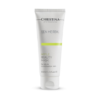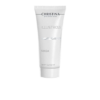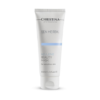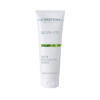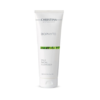
Exfoliation is one of the fastest ways to refresh the skin, brighten tone, clear pores and improve texture – but it’s also one of the easiest steps to overdo.
Choosing the right exfoliator means matching type, strength, frequency, and application to your skin’s needs. Below is a thorough, practical guide for cosmetologist-level readers and clients who want to exfoliate safely and effectively at home.
Quick roadmap – what you’ll learn
- The two main kinds of exfoliation (chemical vs physical) and when to use each.
- How to match exfoliant type and strength to your skin type and concerns.
- Practical rules: patch testing, frequency, layering with other actives, and sun protection.
- Answers to the specific FAQs you asked (AHA vs BHA, 2% salicylic, best method for face, etc.).
- Actionable mini-routine examples for common skin types.
Best chemical exfoliator for face
Chemical exfoliants use acids or enzymes to dissolve the bonds between dead skin cells. They tend to be gentler and more even than physical scrubs.
Which to pick:
- Glycolic acid (AHA) – small molecule, strong penetration. Good for dullness, sun-damaged or thicker skin. Start low (5-8%) if you’re new.
- Lactic acid (AHA) – gentler, hydrating, good for sensitive or dry skin; often recommended as a starter AHA.
- Mandelic acid (AHA) – larger molecule, slower penetration, good for sensitive or melasma-prone skin and for darker skin tones (lower irritation).
- Salicylic acid (BHA) – oil-soluble, penetrates sebum and pores; best for oily, acne-prone skin and blackheads.
- PH & formulation matter: effect depends on concentration and pH – a product with an AHA at a very high pH may be ineffective.
Practical tip: for home use, start with low-to-moderate concentrations (e.g., AHA 5–10%, BHA 0.5–2%) and observe how your skin responds.
Exfoliator for oily skin
If you have oily or combination skin, your priorities are unclogging pores and controlling shine without stripping.
Good choices:
- BHA (salicylic acid) – best first line: oil-soluble, anti-comedogenic, reduces blackheads.
- Light AHA use (lactic or glycolic) for texture and brightening – but use less often than BHA if you’re oily and acne-prone.
- Avoid abrasive physical scrubs with large, jagged particles (they can cause microtears and rebound oiliness).
Routine suggestion for oily skin:
- Cleanse → BHA leave-on (0.5–2%) 2–4 times/week depending on tolerance → moisturizer → sunscreen (AM).
- If using stronger AHA sessions (e.g., glycolic), limit to 1–2 times/week and do not combine with fresh BHA the same day unless you know your tolerance.
How to choose exfoliator for face at home
A simple decision tree to follow:
- Identify your skin type & concerns: oily/acne-prone, dry/sensitive, combination, textured/dull, hyperpigmentation.
- Pick the mechanism: BHA for oily/blemished; AHA for surface texture, dullness, pigmentation; enzymes/fruit acids for sensitive or very reactive skin.
- Select strength: start low. For most beginners: AHA 5–10% or enzyme-based; BHA 0.5–2%.
- Decide frequency: start 1–2x/week → increase slowly to 3–4x as tolerated for chemical leave-ons. Physical exfoliation should be gentler and less frequent (1–2x/week).
- Check formulation & pH: trusted brands will list pH or effective concentration. Lower pH (for AHAs) increases activity – more irritation risk.
- Patch test: always patch-test for 24–48 hours.
- Sunscreen commitment: you must use SPF every day when using acids.
AHA vs BHA for face – which one do I need?
- AHA (alpha hydroxy acids) – water-soluble; work on the skin surface: good for fine lines, uneven tone, dryness and superficial pigmentation. Examples: glycolic, lactic, mandelic.
- BHA (beta hydroxy acids) – oil-soluble; penetrate into pores to dissolve sebum: ideal for oily, acne-prone or congested skin. Example: salicylic acid.
Choose AHA if: your skin is dry, sun-damaged, textured, or you want brightening and exfoliation of the surface.
Choose BHA if: your skin is oily, you have blackheads, or recurrent breakouts.
You can combine them cautiously (e.g., alternate days or use a product that blends small amounts), but mixing strong doses of both simultaneously can increase irritation.
Salicylic acid 2% exfoliator – is that effective?
Yes. 2% salicylic acid is a common, effective OTC concentration for acne, oily skin, and blackheads. Many cleansers, toners, and leave-on treatments use 0.5–2% salicylic acid.
Notes:
- Formulation matters: leave-on products (serums, toners) will have more sustained action than a rinse-off cleanser.
- Frequency: start with once every other day or 2–3x/week and increase if tolerated.
- Safety: OTC topical salicylic at these concentrations is widely used. If pregnant or breastfeeding, or if you have aspirin allergy, check with a physician before use.
Frequently asked direct questions
How do I know if my skin needs AHA or BHA?
- If your main issues are dullness, texture, age spots, or dry flakiness → AHA.
- If you have oily skin, clogged pores, blackheads or inflammatory acne → BHA.
When in doubt, start with a gentle lactic acid (AHA) or a low-dose BHA and observe.
Is 2% salicylic acid an exfoliator?
- Yes. 2% salicylic is a BHA exfoliant that dissolves pore-clogging sebum and loosens dead cells inside the follicle.
Which exfoliation is best for the face?
- “Best” depends on your skin. Chemically exfoliating (AHAs/BHAs) is generally safer and more effective for even results; avoid harsh physical scrubs with jagged particles. For sensitive skin, enzyme-based exfoliants or mandelic/lactic acid are often best.
Is salicylic acid a BHA or AHA?
- Salicylic acid is a BHA (beta hydroxy acid).
How to choose exfoliator for face at home
- Follow the decision tree in section 3. Key takeaways: match mechanism to concern, start low, patch test, use sunscreen.
How to choose exfoliator for face for oily skin
- Prefer BHA (salicylic acid), lightweight leave-on formulations, and avoid heavy creams or abrasive scrubs. Use a non-comedogenic moisturizer after exfoliation.
Practical safety and usage rules (must-follow)
- Patch test: apply a pea-sized amount on inner forearm or behind ear. Wait 24–48 hours. Look for redness, rash, stinging.
- Start slow: use 1–2× per week for the first 2–4 weeks, then increase slowly.
- Leave-on vs rinse-off: leave-on chemical exfoliants are more effective and should be used less frequently if stronger; cleansers with acids rinse quickly and are milder.
- Don’t overlayer strong actives: avoid using a strong acid on the same night as a fresh retinoid or multiple acids unless you’re experienced – irritation risk. If combining, prefer alternating nights.
- Always use SPF: exfoliation increases sun sensitivity. Apply broad-spectrum SPF 30+ every morning.
- Avoid micro-tearing: skip harsh physical scrubs, grainy pits (apricot kernels, salt) or rough brushes if you have active acne, rosacea or sensitive skin.
- If you notice persistent burning, blistering, swelling or darkening – stop and see a clinician.
- Pregnancy & breastfeeding: consult your doctor about routine changes; many clinicians recommend limiting salicylic acid and chemical peels- ask your provider.
How to build a simple at-home exfoliation plan (examples)
Oily, acne-prone (beginner)
AM: gentle cleanser → light water-based moisturizer → SPF.
PM (2–3×/week): cleanse → 2% salicylic acid leave-on serum/toner → moisturizer. Increase frequency slowly.
Dry, sensitive (beginner)
AM: gentle cleanser → hydrating moisturizer → SPF.
PM (1–2×/week): cleanse → lactic acid 5–8% leave-on or enzyme mask for 5–10 minutes → rinse if mask → moisturizer.
Dull / textured / sun-damaged
AM: gentle cleanser → antioxidant serum (vitamin C) → SPF.
PM (1–3×/week): glycolic 5–10% or lactic 5–10% (leave-on or at-home peel per product guidance) → moisturizer. Avoid using vitamin C and AHA together at night without spacing them.
Combination (oily T-zone, dry cheeks)
Use spot treatments: BHA on T-zone, gentler AHA or enzyme on cheeks; or alternate nights.
Common myths (quickly debunked)
- Myth: “Physical scrubs are better because they remove more.” – No. They can cause microtears and unevenness. Chemical exfoliation usually gives smoother, longer-lasting results.
- Myth: “Stronger = faster.” – No. Stronger acids increase irritation risk and can damage the skin barrier if used improperly.
- Myth: “If it stings, it’s working.” – Irritation is not the goal. Mild tingling can be normal, but sharp pain, burning, or persistent redness is a warning sign.
Final checklist before you buy or start
- Skin type & main concern identified.
- Product type matches concern (AHA/BHA/enzyme).
- Concentration appropriate for home use (AHA ~ 5-10% common; BHA 0.5-2%).
- Product is from a reputable brand and instructions are clear (leave-on vs rinse-off, pH info if available).
- You have an SPF and plan to use it daily.
- You will patch test and introduce slowly.
Want personalized help choosing the right exfoliator?
If you’re not sure whether your skin needs AHAs, BHAs, lactic acid, or a more gentle enzyme formula – I can help.
Book a personal skincare consultation and get:
- A customized exfoliation plan
- Product recommendations (US-market clean & derm-approved)
- A step-by-step routine for morning + evening
- Guidance on safely combining acids, retinoids & vitamin C
- Tips to avoid irritation and support your skin barrier
Perfect if you struggle with sensitivity, dullness, uneven texture, blackheads or breakouts – and want glowy, smooth, healthy skin without trial & error.
Ready for your best skin? Click on “Book Consultation” to schedule your session.




